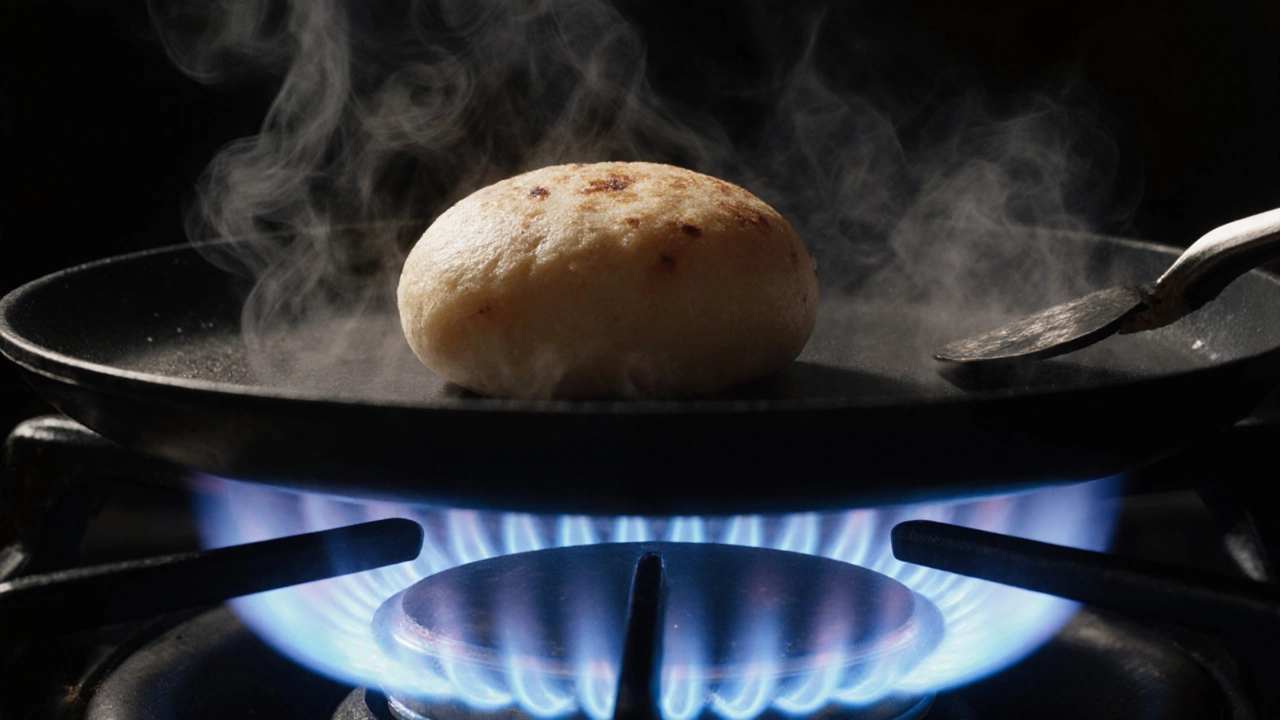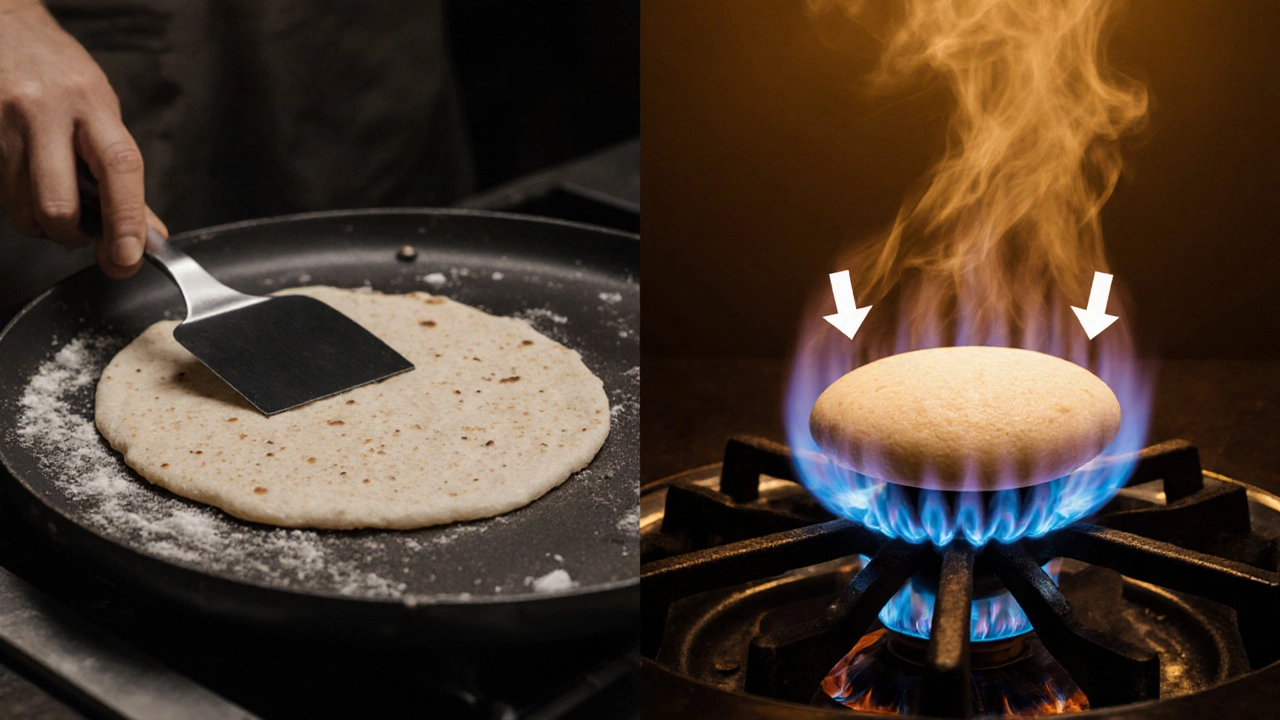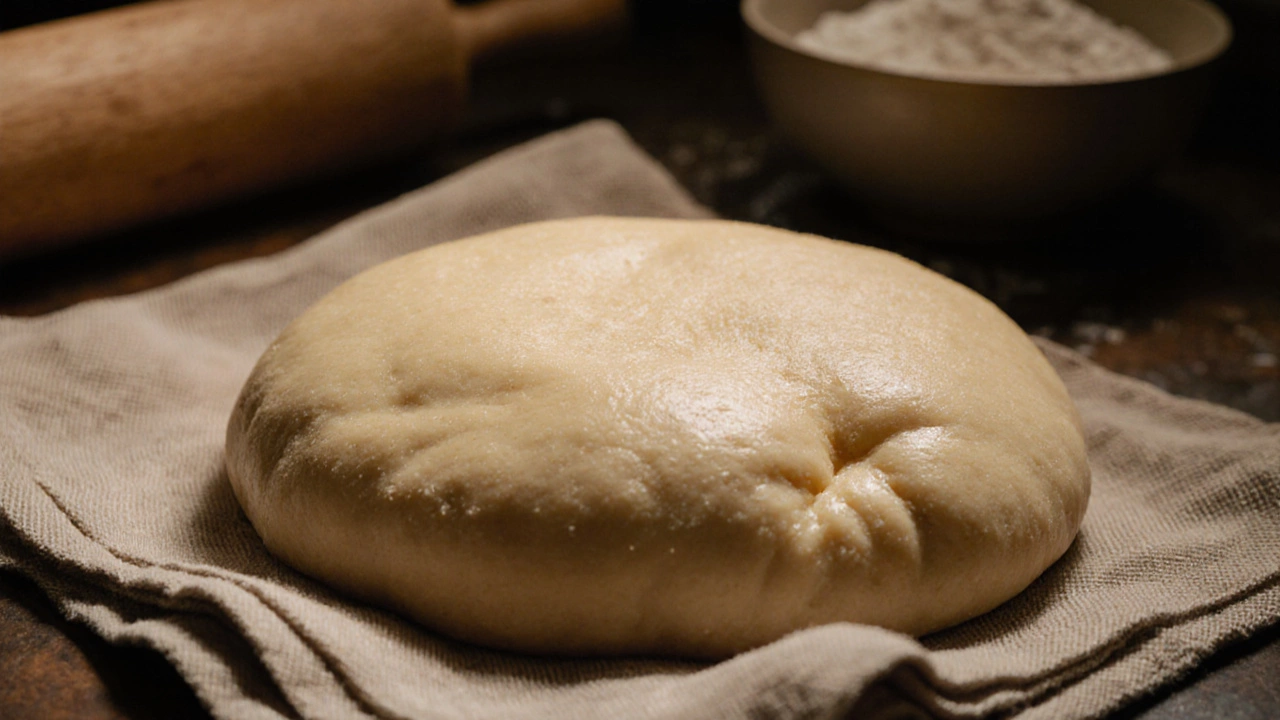If your roti comes out flat and stubborn, you’re not alone. Millions of home cooks face this exact problem every day. Roti should puff up like a balloon over the flame-light, airy, and golden. But too often, it just lies there, dense and lifeless. The issue isn’t your recipe. It’s not your flour. It’s usually one or two simple mistakes you’re making in the process.
The dough is too dry or too wet
Roti dough needs to be soft, like your earlobe. Not hard. Not sticky. Just right. If the dough feels like Play-Doh that’s been left out too long, it’s too dry. Dry dough won’t trap steam, and without steam, there’s no puff. If it’s sticky and clings to your hands, you’ve added too much water. The water-to-flour ratio matters. For 2 cups of whole wheat flour, start with 3/4 cup of warm water. Add it slowly. Knead for at least 8 minutes. The dough should spring back slightly when you press it. If it doesn’t, keep kneading. Under-kneaded dough won’t develop gluten properly, and gluten is what holds the steam inside long enough to make it puff.
You’re not letting the dough rest
Skipping the rest time is the #1 reason roti stays flat. After kneading, cover the dough with a damp cloth and walk away for 30 minutes. That’s not optional. During that time, the flour absorbs water fully, and the gluten relaxes. If you roll out dough straight after kneading, it snaps back like a rubber band. That tension prevents even cooking and traps no steam. If you’re in a hurry, 15 minutes will help-but 30 is ideal. Try it once. You’ll notice the difference the next time you roll.
Your tawa or skillet isn’t hot enough
A cold or lukewarm tawa won’t create the sudden burst of heat needed to turn water into steam fast. You need the surface to be smoking hot. Test it: sprinkle a few drops of water on the tawa. If they skitter and evaporate instantly, you’re good. If they just sit there and bubble slowly, turn up the heat. Most people cook roti on medium heat. That’s wrong. Use medium-high or high. Let the tawa heat for 5 full minutes before you start. A properly heated surface creates a seal on the roti’s bottom surface in seconds, trapping steam inside. That’s what makes it puff.

You’re pressing down with the spatula
This is the most common mistake. You see a roti start to puff, and you instinctively press it with the spatula to help it along. Don’t. That releases the steam. That’s the exact moment the air pocket forms. Pressing it flat is like popping a balloon. Let it puff on its own. If it doesn’t puff after 30 seconds, flip it. The second side will often puff instead. Use the spatula only to flip, not to squash. If you’re used to pressing, try using tongs instead. It forces you to leave it alone.
The roti is too thick or uneven
A roti should be about 1/8 inch thick-thin enough to see your fingers through when held up to light. If it’s thicker than that, the center won’t cook fast enough to create steam pressure. The edges might burn before the middle heats up. Roll it evenly. Start from the center and rotate the dough as you roll. Don’t roll from one side only. Uneven thickness means uneven cooking. One part gets hot and puffs, the other stays dense. If you’re struggling, roll it on a flat surface with a rolling pin that has a smooth, even weight. Don’t use a wooden dowel or a bottle. They don’t give consistent pressure.
You’re not cooking over direct flame
Gas stoves are ideal. Electric coils? They’re slow. Induction? Even slower. The puff happens because of direct, radiant heat. After you flip the roti the second time, hold it over the flame for 5-10 seconds. Not above it. Directly over the blue flame. The heat hits the surface instantly, turning trapped moisture into steam. That’s the magic moment. If you’re using an electric stove, place the tawa as close to the heating element as possible. Some people finish their roti on a gas burner for this exact reason. You don’t need a tandoor. You just need direct flame contact for the final seconds.

The flour isn’t fresh or the wrong type
Not all atta is the same. If you’re using store-bought whole wheat flour that’s been sitting on the shelf for months, it’s lost moisture and elasticity. Freshly milled atta has more natural oils and better gluten structure. Look for brands labeled "roti atta"-they’re ground finer and have higher protein content. If you’re using regular whole wheat flour, try mixing it 50/50 with bread flour. That boosts gluten. Avoid self-rising flour. No leavening agents are needed. Roti puffs because of steam, not baking powder. Also, avoid adding oil or ghee to the dough. That weakens the gluten and prevents puffing. Save the fat for after cooking.
Quick checklist to fix flat roti
- Dough: Soft, not sticky or crumbly
- Knead: At least 8 minutes
- Rest: 30 minutes, covered with a damp cloth
- Tawa: Smoking hot before you start
- Roll: Even, 1/8 inch thick
- Flip: Once, then hold over direct flame
- Press: Never
- Flour: Fresh roti atta, no oil in dough
Try this next time: Make three rotis. One with the old method. One with the rested dough and hot tawa. One with the flame finish. You’ll see the difference instantly. The first will be flat. The second will puff halfway. The third? Perfect. That’s all it takes.
Why does roti puff anyway?
It’s physics. When the dough hits the hot surface, the water inside turns to steam. The gluten network holds it in. The steam expands, pushing the dough upward. If the heat is too slow, the steam escapes before it builds pressure. If the dough is too dry, there’s not enough water. If the gluten is weak, the steam bursts out the sides. If you press it, you let the air out. It’s not magic. It’s science. And once you understand it, you can control it.
Can I use a microwave to make roti puff?
No. Microwaves heat food with water molecules, not with dry, radiant heat. Roti needs direct, intense heat to create steam pressure quickly. A microwave will make your roti rubbery, not puffy. Stick to the tawa and flame.
Why does my roti puff on one side only?
That usually means the dough was rolled unevenly. The thicker side takes longer to heat, so steam builds up on the thinner side first. Roll from the center outward, turning the dough as you go. Make sure it’s the same thickness all the way around.
Should I add baking powder to help roti puff?
No. Traditional roti doesn’t need any leavening agents. Baking powder creates gas bubbles, but they’re too slow and weak to make the roti puff properly. It also changes the flavor and texture. Real roti puffs because of steam and heat-not chemicals.
Can I make roti ahead of time and reheat it?
Yes, but not in the microwave. Stack cooled roti with parchment paper between them and store in an airtight container for up to 2 days. To reheat, warm each one for 10-15 seconds on a hot tawa, then hold over flame for 5 seconds. That restores the puff and softness.
Why does my roti crack while rolling?
Cracking means the dough is too dry or under-kneaded. Add a teaspoon of water at a time and knead for another 2 minutes. If it still cracks, let it rest another 10 minutes. The flour needs time to hydrate fully. Don’t force it.

